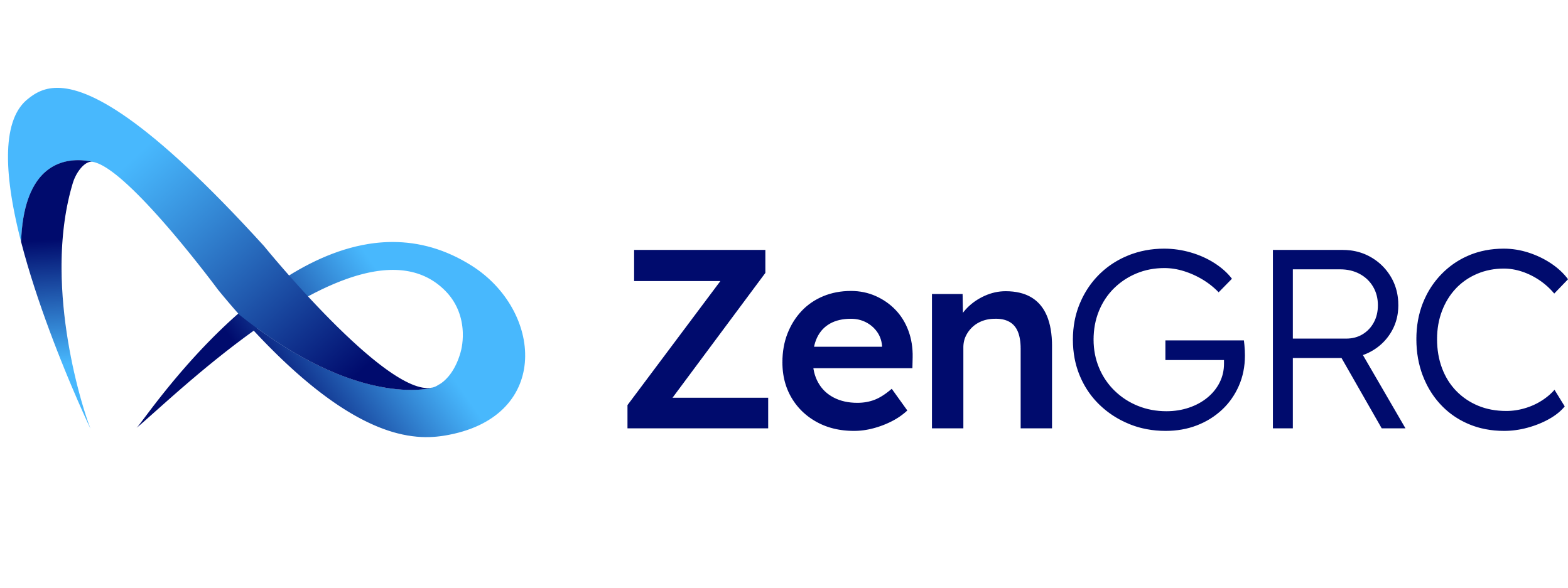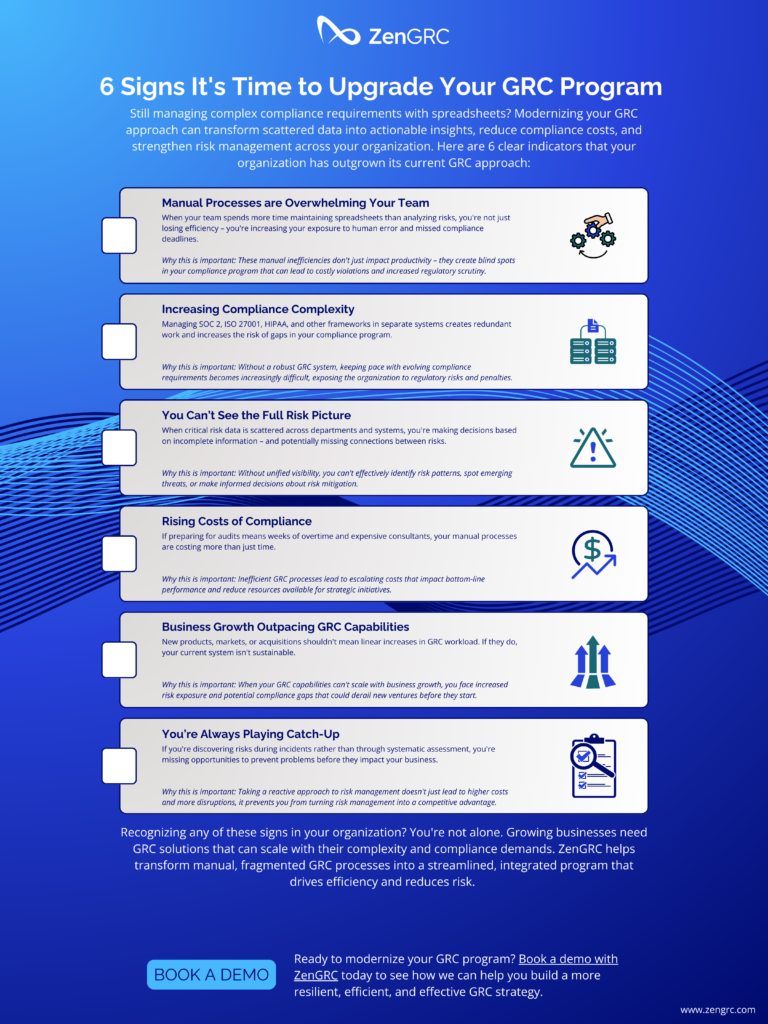A Guide to Operationalizing and Scaling Governance, Risk, & Compliance
Manual processes slowing you down? Transform your GRC from a cost center into a business driver. Our new e-book shows you how integrated GRC reduces operational costs, streamlines decision-making, and drives sustainable growth.
Forward-thinking organizations are cutting audit preparation time, eliminating duplicate efforts, and preventing costly compliance gaps while accelerating business decisions. Download “Integrated GRC: Driving Business Value Through Effective Governance, Risk and Compliance” to learn how ZenGRC can help you turn compliance and risk management into competitive advantages.

Ready to see ZenGRC in action?
Fill out the form to book your demo today and take the first step towards simplifying your GRC processes!



